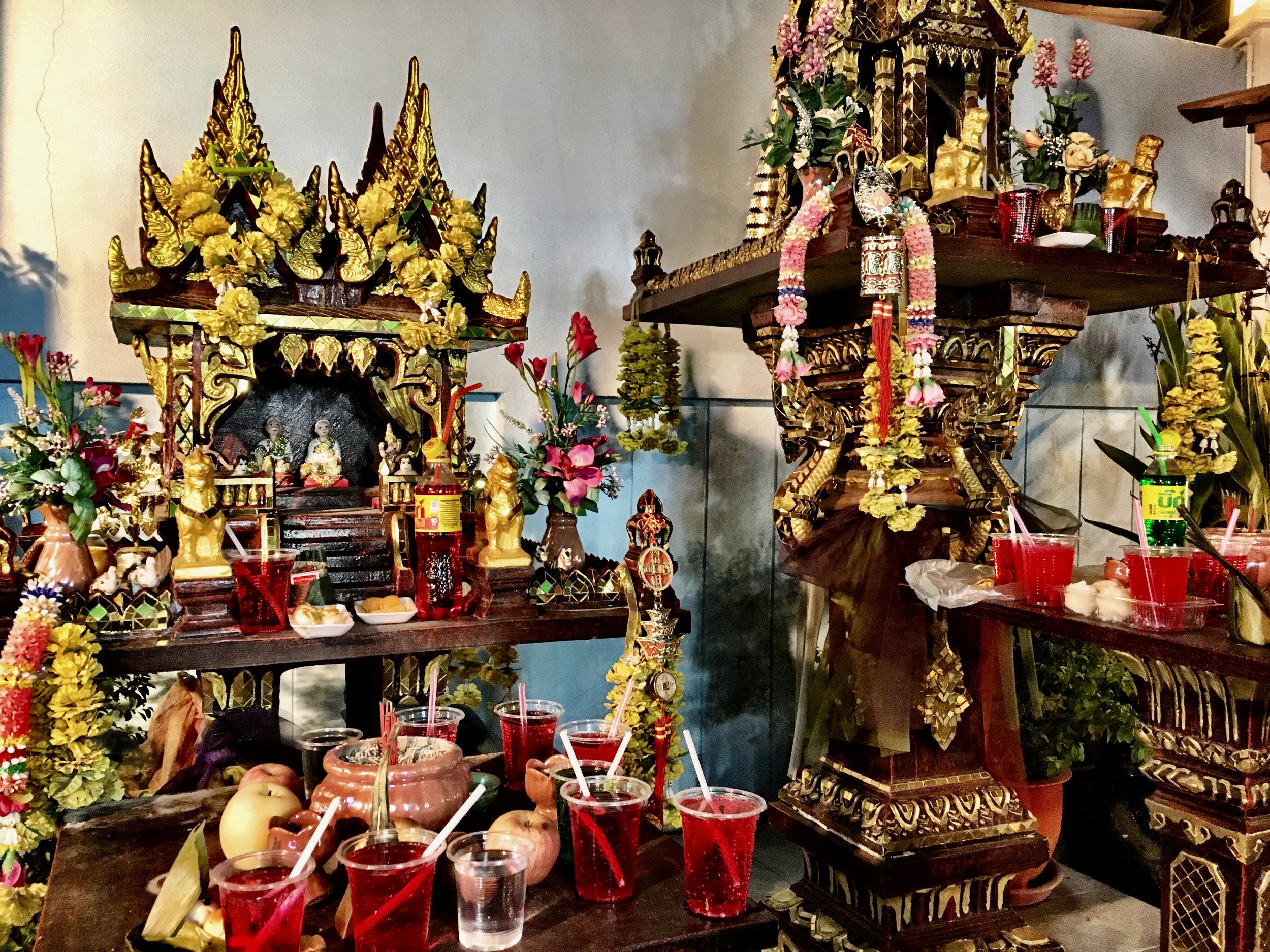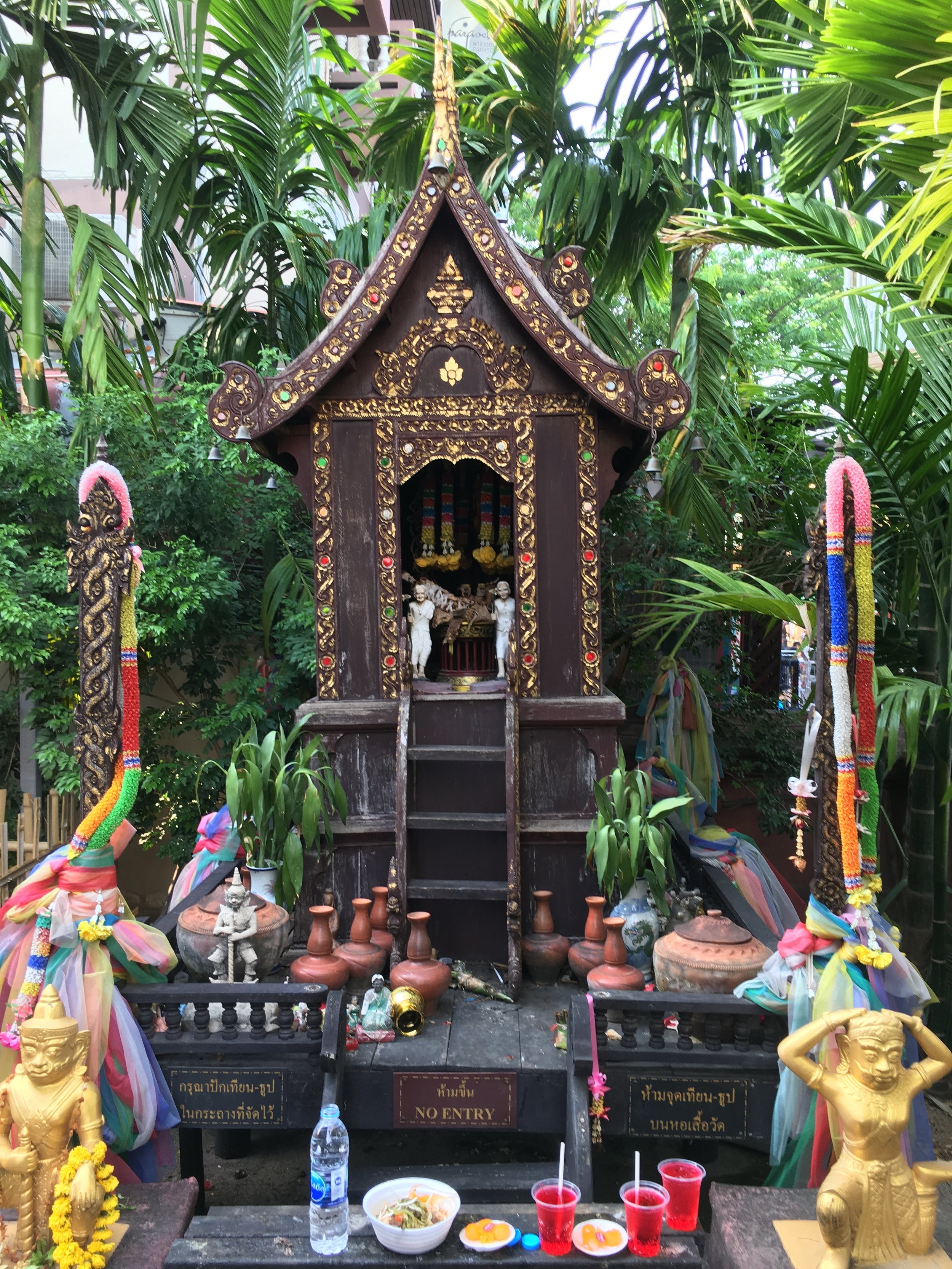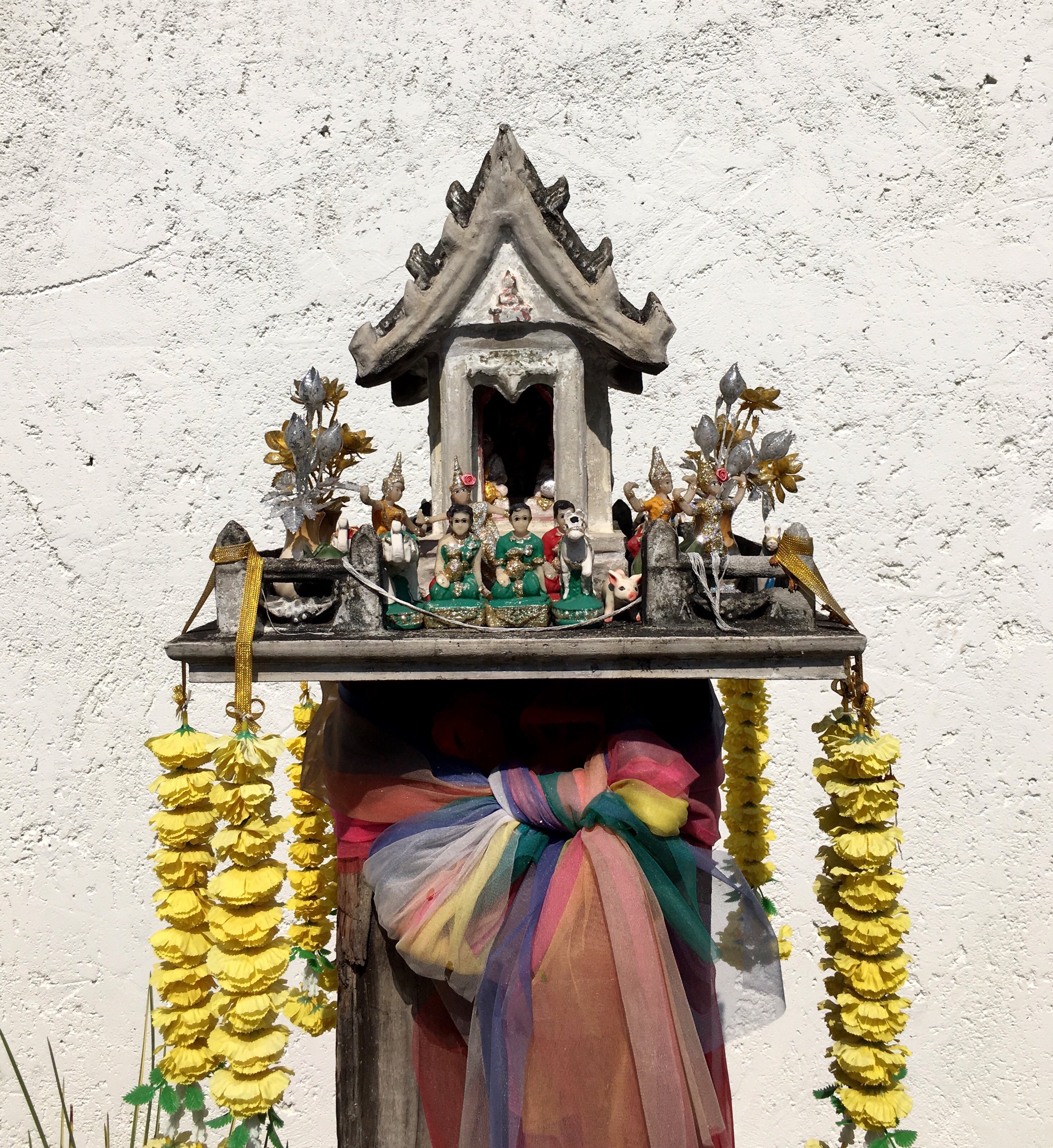A relic of animism in a Buddhist country, a san phra phum can keep spirits happy. Neglect the daily offering and you might be in trouble.
This spirit house includes a ladder for easy access should the spirit wish to leave and wander the Earth.
Although the vast majority of Thais are Buddhist, nearly all believe that the spiritual world coexists with the physical world. The country’s older animist origins predate the emergence of Theravada Buddhism. Supernatural forces play an important role in daily life and are not confined to the realm of myth or folklore. Collectively known as phi, these spirits are present everywhere, inhabiting both living and inanimate objects.
When a new building is constructed, be it a traditional village house or a multi-story office block, the owners will construct a home for the spirits who also occupy that land.
“The more attention you give to a spirit, the more good luck you will receive. Phi can also cause trouble if not given enough care, and wreak havoc when made homeless.”
Among the innumerable variety of phi, many of which can influence human life, are the ghosts of people killed by animals, women who died in childbirth, and those who perished but didn’t receive a proper burial.
Spirit houses, known as san phra phum, are small shrines that provide a home for guardian spirits. Every home and most businesses in Thailand have one.
Spirits in the Material World
Throughout Thailand, miniature dwellings perched on chest-high pedestals, or spirit houses, can be seen standing in close proximity to homes, hotels and other businesses. Known as san phra phum in Thai, some are simple weathered teak wood structures resembling traditional Thai homes, while others are ornate, colorful, spire-topped cast concrete affairs that look more like miniature temples.
These abodes function as a home for displaced phi. Trees are one of the most common places for phi to dwell. A rock, river bend, spring or cave is infused with spiritual properties. Wally and I encountered a shrine to Mae Nak, one of Thailand’s best-known ghosts, on a trail leading to Mae Ya Waterfall, part of Doi Inthanon National Park.
The four-faced Hindu god Brahma is a popular figure in spirit houses, especially in the Bangkok area.
Appeasing the Spirits
The san phra phum must be given the proper spot on the site. The current human landlords respect the right of the ethereal previous owners to remain — even if they didn’t know them when they were alive.
A Brahmin priest or astrologer is consulted to supervise the appropriate placement and optimal time to undertake this venture. Spirit houses should preferably be located in front of a tree, and not to the left side of a door or facing a toilet or road.
Wally and Duke gave offerings of fruit and said prayers at the spirit house on the grounds of their hotel.
Our hotel in Chiang Mai, Hotel des Artists Ping Silhouette, had a lovely wooden spirit house standing beside a jackfruit tree. We would visit it each morning to offer our prayers (and some lady finger bananas) to Nang Kwak, the Thai goddess of wealth, holding a sword in one hand and a money bag in the other.
To appease the spirits, daily offerings are placed on the platform surrounding the san phra phum. Incense, flowers, snacks and ubiquitous bottles of Strawberry Fanta complete with straws are intended to sustain the resident spirit. Once properly satiated, spirits become the territory’s guardians and can offer multiple services. Their principal job is to protect the landowner and their homes from illness, poverty and bad luck. The more attention you give to the spirit, the more success and good luck you will receive. Phi can also cause trouble if not given enough care and are apt to wreak havoc when made homeless.
Much like in Egyptian tombs, spirit houses often include figurines of servants to wait upon the guardian spirits, along with elephants for transport and dancers to entertain.
As it’s tough finding reliable help, figurines including servants, dancers, animals and occasionally small cars — all things intended to symbolically assist the resident phi — are placed and displayed in front of the spirit house. There may be an animal that represents the astrological year the house was constructed or the deity enshrined within. (Learn more about the Thai zodiac here.)
Pii Po Ya, or Spirits of the Grandfather and Grandmother, are represented by figurines of an old man and woman.
I was more than slightly obsessed in finding and photographing a spirit house graveyard after I read about it on the fantastic Spirit House Connection website. Apparently, these are collections of broken, discarded spirit houses no longer fit for use and can sometimes be found beneath the branches of sacred bodhi trees. Even though we had a driver who spoke English quite well, we weren’t ever able to fully explain what we were looking for. –Duke


























